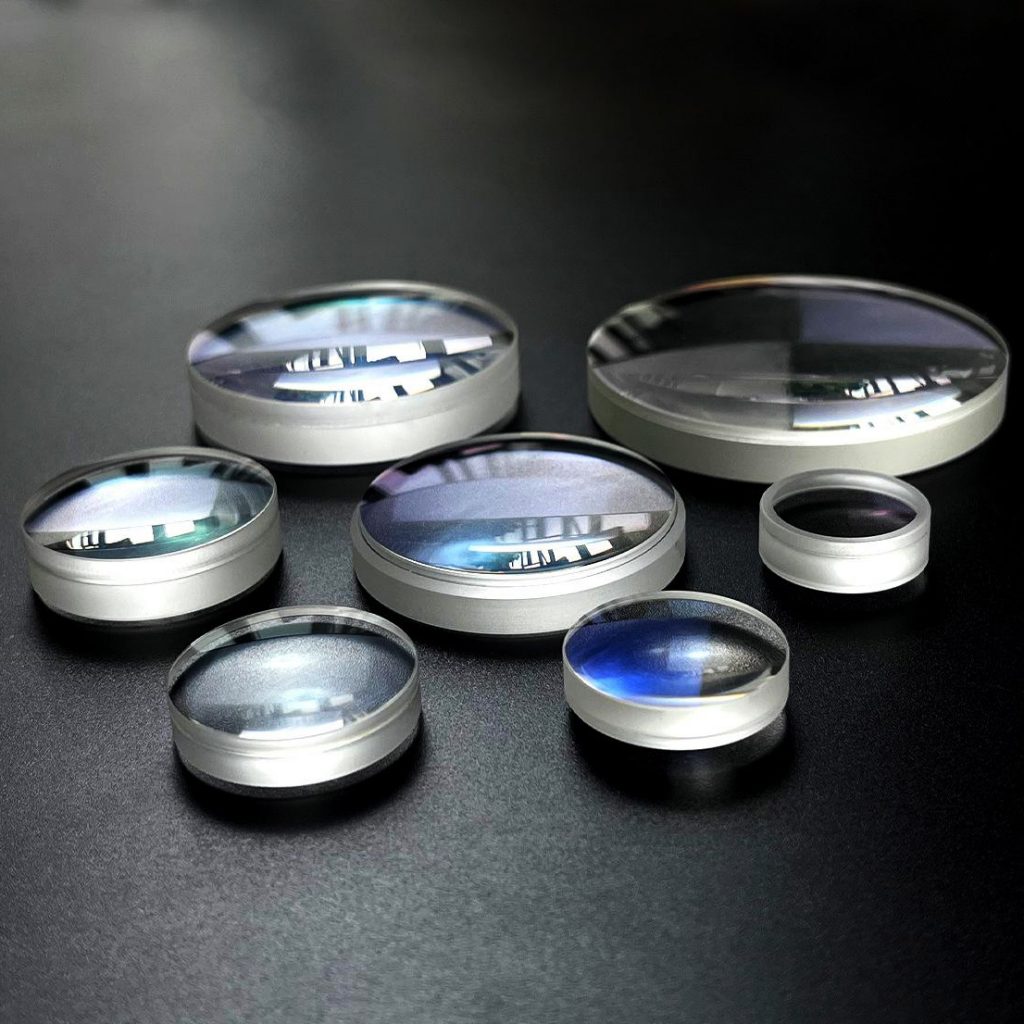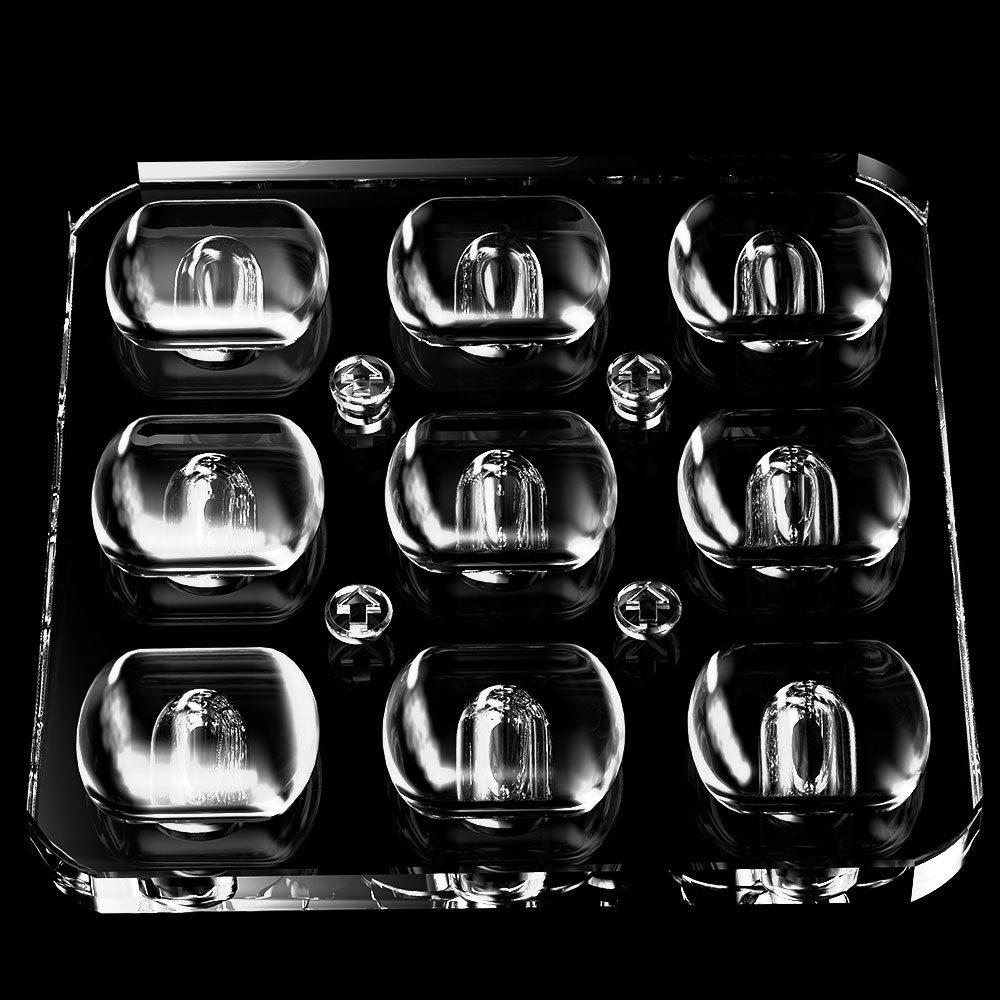平板LED透镜的使用特点主要有哪些?
1.LED光学透镜、对LED所发出的光线的聚光效果可以达到90%以上;3mm厚度时穿透率93%;
2.可以通配各种大功率LED,光斑非常均匀,无杂散光、无黑洞、无阴影或暗区,光线利用率与透光率高,适合小角度聚光之照明灯具。
UV光固化在光学行业应用
1、光学元件装配 (透镜组,棱镜,光学引擎装配)。
2、图像仪器装配(显微镜,内窥镜,红外仪,夜视仪,探头等) 。
LED光学透镜UV固化机的优势:
1、LED固化设备几乎不产生热量,不易碎,不含汞。
2、可节省能耗费用,大大减少了CO2的排放量。
3、UV固化可做到瞬间开启或关闭,无需UV灯方式所必须的预热及降温时间,作业效率得到提高。
4、由于紫外线照射装置与相关配套装置非常紧凑,无需以往那种较大的机械安装空间以及管道施工,设置简单容易,投资少,维修费用低。
5、发光效率更高,耗电量很小,使用寿命达到20000个小时。
6、LED光学透镜照射头通过电脑CPU控制,可以根据实际需要选择手动或自动控制操作,并自行设定光照射所需时间。


嘉腾LED灯具优势
1.散热快,产品更耐用
2.配光优,照明效果更佳
3.光衰少,延长使用寿命
4.外观美,产品设计独特
5.组件好,品质更优
6.品质更优,寿命10年以上
玻璃透镜优势
玻璃透镜连板设计,突破了传统的模组采用的PC连板透镜,带来一种全新的体验,有效地克服了PC透镜的不良问题:
1、抗腐蚀能力:高硼硅3.4玻璃属于硼硅酸盐玻璃中的硼硅玻璃,耐酸耐碱,抗腐蚀性能优越。
2、耐温性强:相比PC透镜,其热膨胀系数较低,拥有良好的热稳定性,光学表面温度的变化小,保留原有的光学照明效果。
3、透光率高:常规PC透镜透光率在85%左右,造成光照的浪费,玻璃透镜透光率为90-93%,镀加增透膜后可高达97%。
4、相比于PC透镜,玻璃透镜不会产生老化/黄化现象,从而影响透镜透光率。
5、相比于PC透镜,玻璃透镜不会吸附灰尘,并且方便清洗。
隧道照明配光
发光角度120°×80°、150°×80°(对称)等多种配光角度,合理的照度均匀度和防眩光等级等
设计有效的改善隧道内路面的墙壁照明状况,改善隧道内视觉享受,减轻驾驶员驾驶疲劳。道路配光
有TYPE2-M、TYPE3-M等多种配光角度,其配光在路面形成照度均匀的类矩形光斑,
可以适用于双向八车道、六车道、四车道、二车道、一车道道路情况。
高杆灯配光
应用于大型广场、主干道交叉路口、码头、车站和体育场等场所中,悬挂高度较高,照明范围比较
广泛而且均匀,能够带来较好的照明效果,满足大面积场所的照明需求。
工矿灯配光
发光角度25°/45°/60°/90°/120°,主要应用于大楼外墙、桥梁、公园、广告招牌、球场广场、
工厂车间照明。
Advantages of Jiateng LED lighting fixtures
- Fast heat dissipation and more durable products
- Excellent lighting distribution and better lighting effect
- Less light decay, extending service life
- Beautiful appearance and unique product design
- Good components and better quality
- Better quality, with a lifespan of over 10 years
Advantages of glass lenses
The glass lens connecting plate design breaks through the traditional PC connecting plate lens used in modules, bringing a brand new experience and effectively overcoming the adverse problems of PC lenses: - Corrosion resistance: High borosilicate 3.4 glass belongs to borosilicate glass, which is acid and alkali resistant and has superior corrosion resistance.
- Strong temperature resistance: Compared to PC lenses, their thermal expansion coefficient is lower, they have good thermal stability, and the optical surface temperature changes are small, retaining the original optical lighting effect.
- High transmittance: The transmittance of conventional PC lenses is around 85%, causing waste of light. The transmittance of glass lenses is 90-93%, and can reach up to 97% after coating with antireflective film.
- Compared to PC lenses, glass lenses do not experience aging/yellowing, which affects the lens transmittance.
- Compared to PC lenses, glass lenses do not absorb dust and are easy to clean.
Tunnel lighting distribution
Luminous angle 120 ° × 80 °, 150 ° × Multiple light distribution angles such as 80 ° (symmetrical), reasonable illumination uniformity, and anti glare levels
Design effective improvements to the wall lighting of the road surface inside the tunnel, improve visual enjoyment inside the tunnel, and reduce driver fatigue. Road light distribution
There are various light distribution angles such as TYPE2-M and TYPE3-M, which form a rectangular shaped spot with uniform illumination on the road surface,
It can be applied to two-way eight lane, six lane, four lane, two lane, and one lane roads.
High pole light distribution
Applied in large squares, intersections of main roads, docks, stations, and sports venues, with high suspension height and relatively large lighting range
Widely and evenly distributed, it can bring good lighting effects and meet the lighting needs of large areas.
Lighting distribution for industrial and mining lamps
Luminous angle 25 °/45 °/60 °/90 °/120 °, mainly used for building exterior walls, bridges, parks, advertising signs, stadium squares
Factory workshop lighting.
